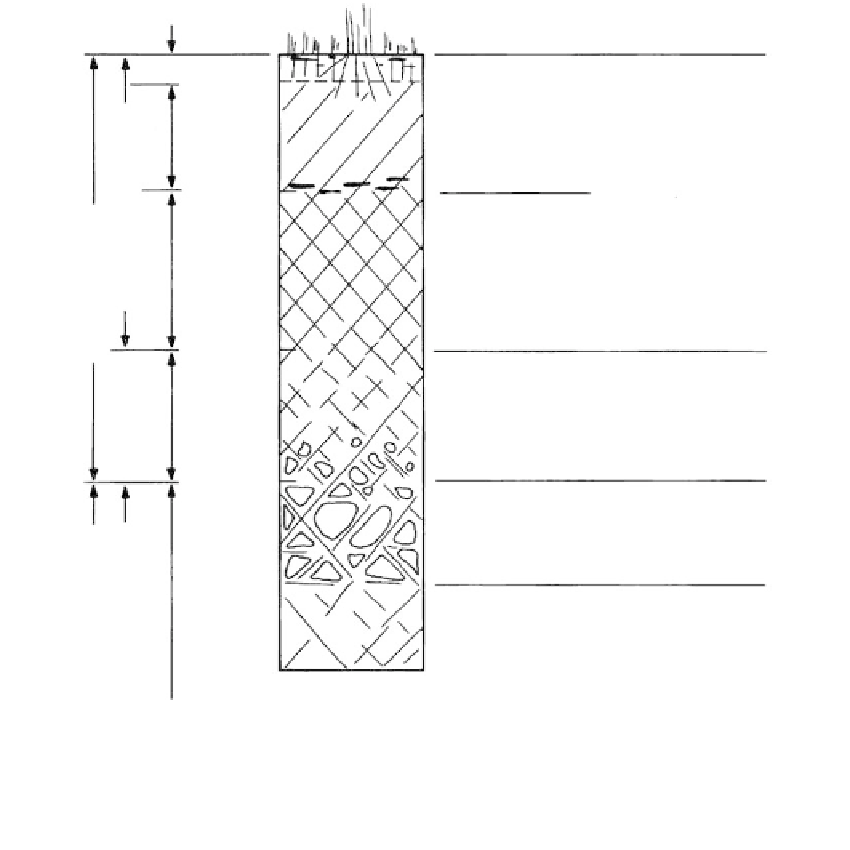Environmental Engineering Reference
In-Depth Information
Depth
Zone
Material
Humus
Red or brown
"porous clay"
A
I
B
(Mature residual
or colluvial soil)
Limonite
concretions
(Upper)
1
−
10 m
C
II
Red or yellow
indurated clay
(Intermediate)
5
−
15 m
Residual hard
clay with
relict structure
III
(Saprolite)
5
−
30 m
Weathered rock.
Boulders, blocks,
or layers of
altered rock.
IV
(Weathered
rock)
V
Sound rock
FIGURE 6.81
Decomposition profile in basaltic rocks in the Interland Plateau of south-central Brazil. (
Note:
Saprolite is
usually considered to be in the C horizon.) (From Vargas, M.,
Proceedings of the 2nd International Congress,
International Association of Engineering Geology, Sao Paulo, Vol. 1, 1974. With permission.)
Metamorphic Rocks
General
Foliated metamorphic rocks such as gneiss and schist decompose with comparative ease
because water enters and moves with relative freedom through the foliations. They tend
to decompose to substantial depths, often greater than 100 ft (30 m) in moist climates. The
typical decomposition profile in the metamorphic rocks of the coastal mountain range of
Brazil is given in
Figure 6.82,
which includes ranges in depths and typical seismic refrac-
tion velocities for each zone. Seismic velocities are strong indicators of the profile devel-
opment and depths.
Slate, amphibolite, and massive metamorphic rocks are relatively resistant to chemical
decomposition.
Foliated Rocks: Typical Profile Development
Stage 1
: Fresh rock grades to moderately decomposed rock
(Figure 6.83).
Feldspars and
micas have just begun to decompose and the clayey alteration of minerals can be seen with
a microscope but the minerals are still firm. Brown, reddish-brown, or yellow-brown dis-
coloration with iron oxides occurs, especially along partings, and the density reduces to


